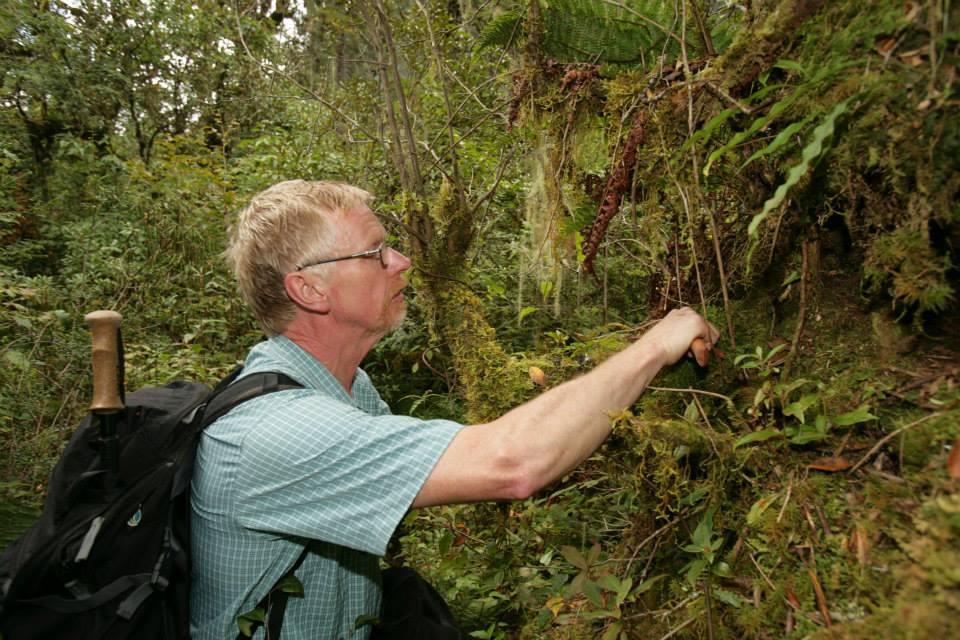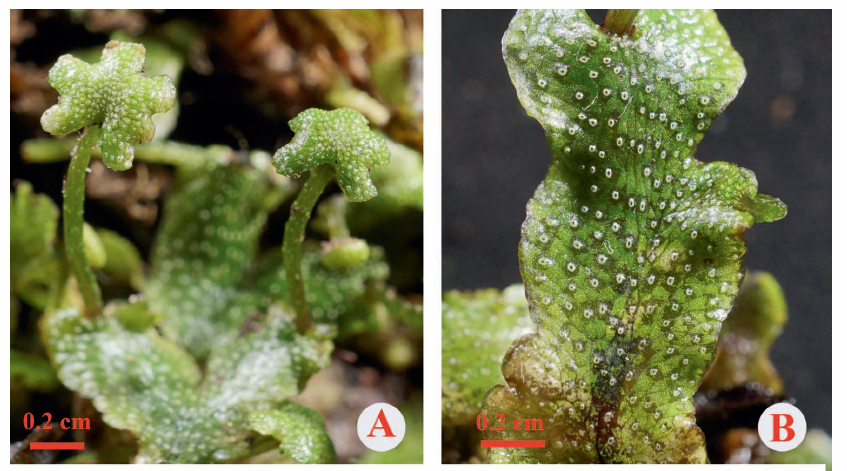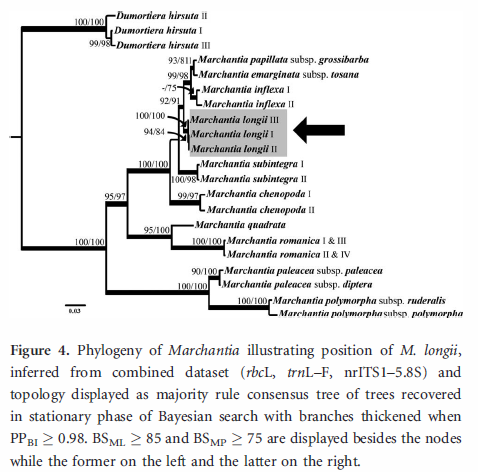Formerly the head of our Cryptogam section, and currently an extremely active RBGE Research Associate, David Long is well known and respected for his botanical work in the Himalayas, and for his bryological research. He has collected a huge number of taxonomically and phylogenetically interesting bryophytes on numerous plant collecting expeditions, collaborating with researchers around the world. His 2006 monograph on Eurasia Asterella reflects a special interest in the complex thalloid liverworts (Marchantiopsida), which has formed a focal point for subsequent research at RBGE on the systematics of the group (e.g., Villarreal et al. 2015).
In October this year, Chinese colleagues You-Liang Xiang, Lei Shu and Rui-Liang Zhu, using morphological and molecular evidence, described a new species of Marchantia from the northwestern region of Yunnan. Their paper, in the American Bryological and Lichenological Society journal The Bryologist, suggests that this is a distinct species, phylogenetically related to Marchantia inflexa, M. papillata and M. emarginata.
The new species differs morphologically from other Marchantia species in the area by a suite of pore, thallus and receptacle characters, one of the most obvious of which is its very large epidermal pores, which can clearly be seen in the photographs presented by Xiang et al. The authors have named their new plant Marchantia longii R.L.Zhu, Y.L.Xiang et L.Shu, in honour of David, because he is “the specialist of complex thalloid liverworts and made several bryological expeditions in northwestern Yunnan, China”.
On these expeditions to the area, David collected extensively. It remains to be seen, however, whether his own collections include any plants of the newly named Long’s Marchantia!



